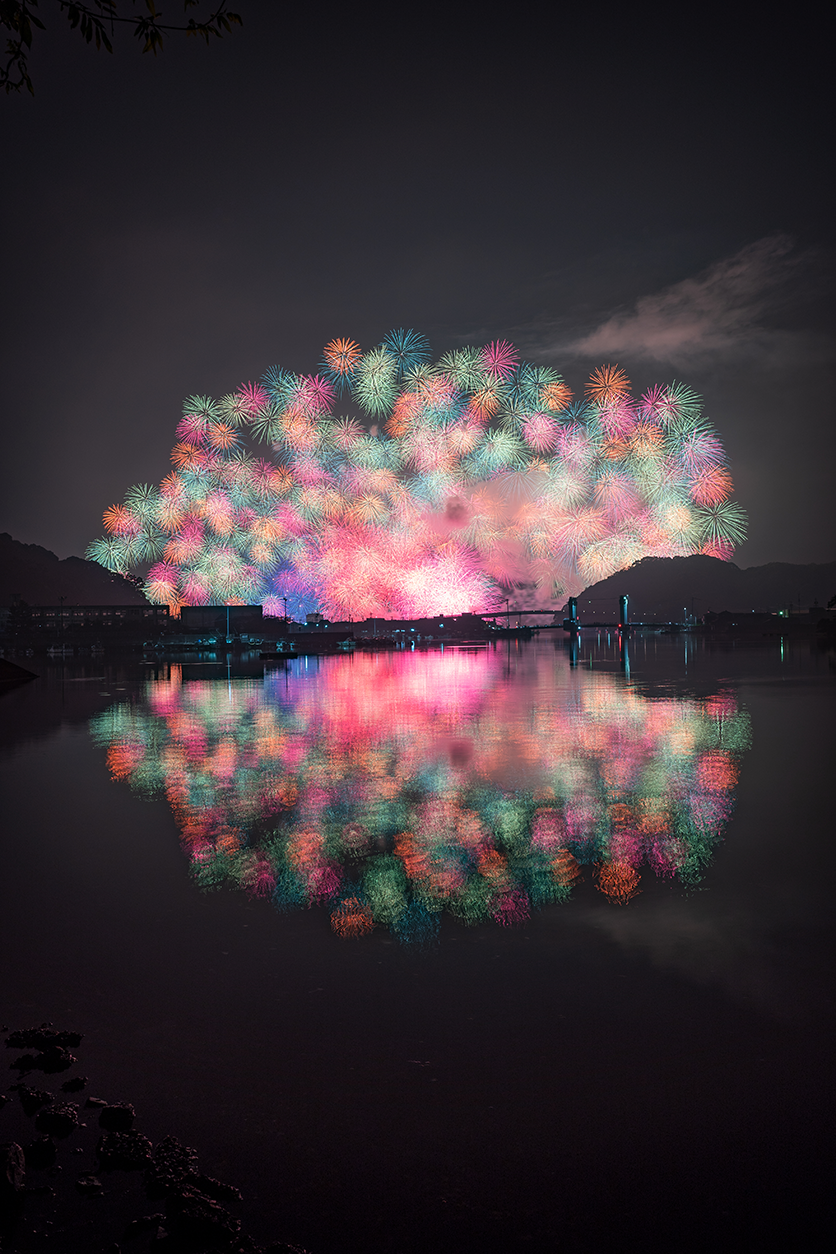January 31, 2025
How to shoot fireworks: Tips for exposure settings and lens selection to capture beautiful photos
How to shoot fireworks: Tips for exposure settings and lens selection to capture beautiful photos
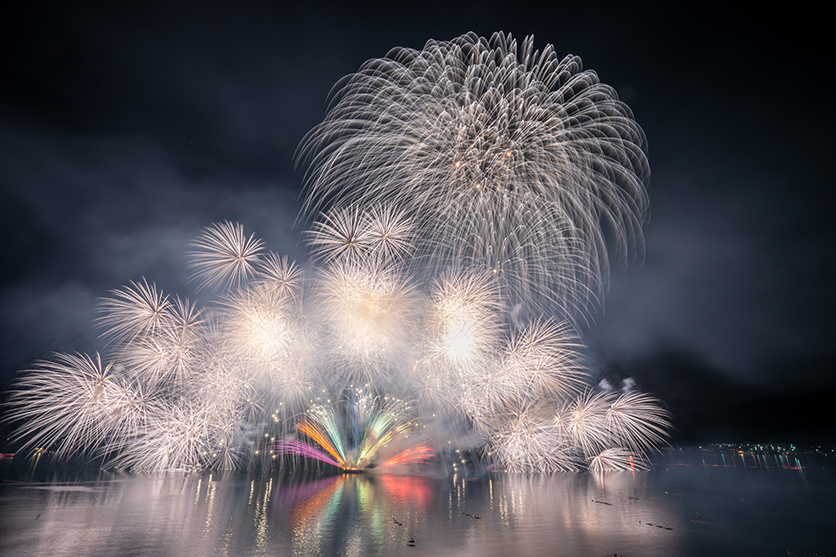

The summer night sky illuminated by fireworks. Many of you may wish to capture that beautiful moment in a photo. Shooting fireworks might seem difficult at first, but with the right basic camera settings and lens selection, even beginners can give it a try. In this article, we will introduce how to shoot fireworks and tips for taking beautiful photos.
What you need for shooting fireworks
For capturing the entire scene, a wide-angle lens is useful. Additionally, since long exposure is often required, having a tripod and remote shutter release can help minimize shake that occurs when pressing the shutter. Here are some essential items for shooting fireworks.
Capture the entire fireworks display with a Wide Angle Lens
To capture the full scene of fireworks, a Wide Angle lens is indispensable. Using a Wide Angle lens (approximately 35mm or less) allows you to include the entire display in the frame. Additionally, by capturing surrounding buildings or the audience, you can convey the atmosphere of the fireworks event, making for a more immersive photo. When shooting, stop down to around F8 to F16 to keep the fireworks shapes sharp and preserve the beautiful light trails.
Zoom in with a telephoto Lens
If you want to emphasize the structure of the fireworks, a telephoto lens (approximately 80mm or more) is recommended. With a telephoto lens, you can capture the fireworks dramatically from a distance. Its compression effect allows for dynamic expression of the colors and light trails of the fireworks. It is especially useful for capturing the intricate spread of the light rays or subtle color gradients.
Tripod
A tripod is essential for long-exposure techniques such as bulb shooting or capturing the firework’s movement from launch to bloom. Choosing a tripod with a low center of gravity and stability will reduce wobble from the wind, helping you achieve sharp photos. It’s a good idea to bring a sturdy tripod that can be securely placed even in unstable conditions.
Shutter release or remote commander
When shooting with long exposure, pressing the shutter button directly can cause hand shake. Using a shutter release or remote commander allows you to trigger the shutter without touching the camera, preventing this blur.
ND Filter
Once you become more comfortable with shooting and want to challenge yourself to take more professional-looking photos, try using an ND filter. ND filters are useful when shooting scenes like star mines, where multiple fireworks are launched simultaneously and could result in overexposure. By using ND8 to ND64, you can adjust the exposure to achieve proper exposure for shooting. Having an ND filter expands your creative possibilities for more controlled, deliberate exposure.
Others
Prepare extra batteries and memory cards for long shooting sessions. Additionally, having a headlamp or simple light for handling equipment in dark conditions is helpful. To avoid panic during the shoot, be sure to prepare everything thoroughly in advance.
Tips for taking great fireworks photos
Now, let's look at specific shooting settings. By being mindful of proper exposure settings and composition, you can beautifully capture the fireworks glowing in the night sky.
Set the correct exposure
Fireworks are illuminated against a dark background, and their complex lights appear suddenly, so automatic exposure may struggle to adjust brightness properly. Let’s go over some recommended settings for aperture (F-number) and shutter speed.
Shooting mode
In fireworks photography, it is difficult to achieve the desired exposure in auto mode, so manual mode is usually necessary. Specifically, using bulb mode, where the exposure continues only while the shutter is open, allows you to capture the entire movement of the fireworks from launch to bloom to fading away.
Shutter speed
To beautifully express the light trails of fireworks, a slow shutter speed of about 2 to 4 seconds is ideal. If using bulb mode, listen for the sound of the launch, then press the shutter and keep it open until the firework fades. For multi-firework scenes like star mines, an exposure time of around 8 seconds or longer is recommended for more impactful images.
F-number (Aperture)
To capture the beauty of fireworks’ structures with sharpness, setting the aperture between F8 and F11 is ideal. This ensures that even fireworks at different heights are captured clearly. It also helps to achieve a photo where the focus is deep from the foreground to the background.
ISO Sensitivity
Start with a low ISO setting around ISO100 to ISO400. Using low ISO sensitivity helps produce clearer, noise-free images that capture the fireworks’ beautiful colors. If the exposure becomes too dark, you can increase the sensitivity by one step.
White balance
Use auto white balance or daylight to capture the natural colors of the fireworks. If you prefer a specific color tone, you can intentionally set the white balance to suit your preferences.
Additionally, shooting in RAW format allows for finer adjustments later. However, when multiple colors of fireworks are launched simultaneously, it may be challenging to adjust the balance afterward, so check the results on-site as well.
Tips for focusing accurately
Focusing in the dark for fireworks photography can be challenging. We recommend estimating the distance to the launch site in advance and manually setting the focus to some extent. It’s best to set the focus just slightly in front of the infinity mark on the lens.
Also, using the live view magnification feature to focus on nearby streetlights or buildings can help. Take a few test shots before the actual shoot to find the optimal focus point.
When to open the shutter?
As a guideline, open the shutter when you hear the launch sound and keep it open until the firework completely fades. This allows you to beautifully capture the entire trajectory and bloom of the firework.
For scenes like star mines where multiple fireworks are launched, observe a few bursts first and anticipate the timing before shooting. Alternatively, you can shoot multiple exposures and later blend them using multiple exposures.
Try various compositions
For basic compositions, consider using the rule of thirds or centering the composition to achieve balanced photos with appropriate empty space. If there are distinctive buildings or bridges nearby, you can combine them with the fireworks to create a memorable photo that reflects the uniqueness of the location.
If there is a river or sea nearby, using symmetrical compositions with fireworks reflected in the water can create an artistic atmosphere. Also, depending on the firework’s launch pattern, shoot wide for horizontally spreading fireworks, or shoot vertically to emphasize the beauty of a single firework.
Create beautiful photos with multiple exposure blending
For scenes where many fireworks are launched from the same location, it’s easy to overexpose if you try to capture everything in a single exposure. In this case, you can shoot multiple exposures separately and blend them together later using multiple exposure blending.
Set the shutter speed to around 1 second to 1/60 second and shoot continuously. Then, by editing and compositing in software, you can capture the vivid colors of the fireworks and create a dense, powerful image.
Use ND Filters when overexposed
If you experience overexposure with long exposures, using an ND filter to adjust the light intensity can be helpful. Achieving the correct exposure allows you to express the fireworks’ colors and light trails more delicately. Once you become comfortable with manual exposure adjustments, try using an ND filter.
Scene-Specific shooting techniques
So far, we’ve discussed general fireworks photography techniques. Now, let’s explore specific methods for different scenes. Use these tips to help expand your creative ideas for your shots.
Capture the entire fireworks landscape
Using a wide-angle lens, capture not only the fireworks but also the silhouettes of trees, the cityscape, and the audience to create a dynamic composition. Adjust the exposure to balance the streetlights on the ground with the fireworks in the sky, resulting in an impressive photo that harmonizes the night scene and the fireworks. Placing a distinctive building in the foreground as a silhouette will create depth and allow for more dimensional expression.
Close-Up of fireworks’ shape
Use a telephoto lens to get a close-up of the firework’s shape, capturing the delicate bundles of light. By carefully depicting the changing colors of the fireworks and the rays spreading radially from the center, you can convey the intricate beauty of the firework’s structure. Particularly for large fireworks, the beautiful gradients and light trails that appear as they bloom and fade can be captured with great precision, showcasing aspects that are hard to see with the naked eye.
Fireworks and railroads
Combining fireworks with railroads can create a mystical and dramatic atmosphere. For example, using the vanishing point of the railway track as part of the composition adds a sense of depth and enhances the grandeur of the fireworks.
However, photographing both fireworks and trains requires careful planning. Research the timing of the train and firework schedule in advance and find the best shooting spot.
Choosing the right lens for fireworks photography
Here are some points to consider when choosing a lens for fireworks photography.
Focal length
For wide fireworks or landscapes, a wide-angle lens is ideal for capturing the entire scene. It allows you to compose a shot that includes both the fireworks and the surrounding landscape. A telephoto lens, on the other hand, has a narrower field of view, enabling you to zoom in on distant subjects and capture the fireworks’ intricate structure.
Depending on the photo you want to take, the optimal lens will vary. For beginners or those who want to cover both wide and telephoto angles with one lens, a high zoom lens is a good choice.
Maximum aperture
Lenses with a wide aperture (such as F2.8 or F4) allow more light to reach the sensor, making it easier to capture bright photos in dark conditions, such as at night or during sunset. These lenses are versatile and can be used for fireworks, festival shots, portraits, and other types of photography.
Weight and compactness
Since shooting fireworks often involves long hours of walking and traveling, as well as potentially limited space at the shooting location, a lightweight and compact lens is ideal. Lighter lenses reduce the strain on your body, making handheld shooting easier and helping to minimize camera shake without a tripod.
Focus performance
Check how well the autofocus (AF) works in low light, ensuring it’s smooth and accurate. Also, consider the tactile feedback when operating the focus ring to assess the manual focus performance.
Image stabilization
If you plan on shooting handheld, selecting a lens with built-in image stabilization can provide more stability. This is especially useful for telephoto lenses, where shake is more noticeable. Image stabilization is helpful not only for fireworks photography but also for snaps around the venue or landscape shots at night.
Pay attention to exposure settings and lens choice for beautiful fireworks photos
Although fireworks photography may seem challenging, by focusing on exposure settings and composition, you can capture the vibrant colors of the fireworks. Additionally, by carefully considering foreground, background, and composition, you can create impressive photos with a sense of depth. Keep these basic tips in mind and try shooting for yourself.

Lens Featured in this Impression
-
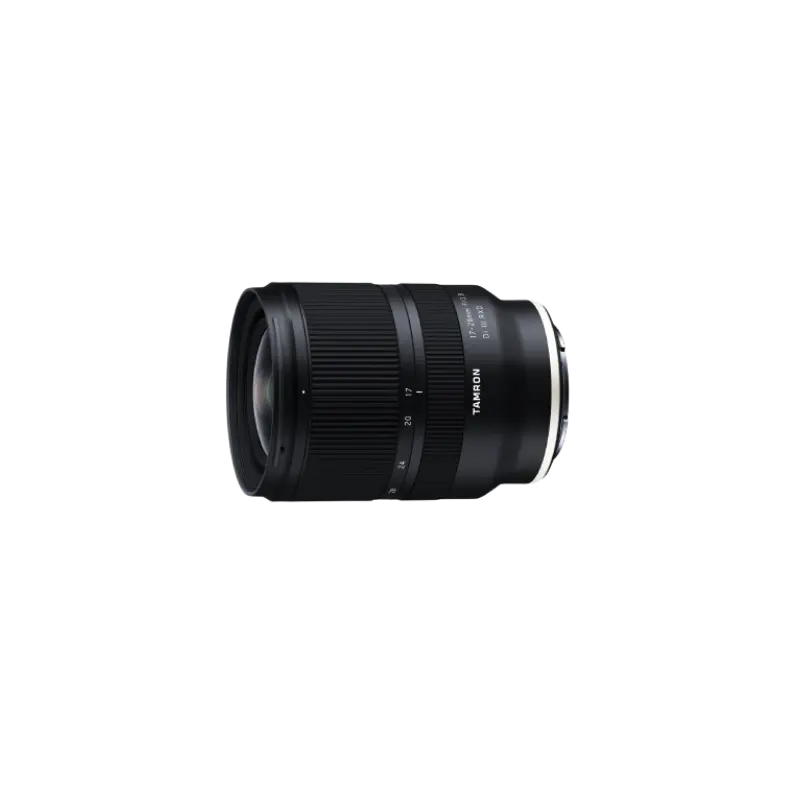
-
17-28mm F/2.8 Di III RXD a046(Model )
The 17-28mm F/2.8 Di III RXD (Model A046) achieves a filter diameter of ø67mm, which is surprising for a large aperture ultra wide-angle zoom lens for full-frame cameras. It’s small and light weight with a good camera balance. It's a dedicated lens for mirrorless interchangeable -lens cameras that can be carried easily and can be used in various situations.
-

-
20-40mm F/2.8 Di III VXD a062(Model )
The 20-40mm F/2.8 Di III VXD (Model A062) is a new large-aperture standard zoom lens that thoroughly pursues portability. While covering the range from the ultra-wide angle of 20mm to the standard range of 40mm, it is the smallest and lightest in its class. It also offers high image quality throughout the entire zoom range, making it useful not only for still image shooting but also for video recording such as vlogging. The VXD, which is quiet and agile, achieves high-speed, high-precision autofocusing. It is a new, unprecedented large-aperture standard zoom lens that allows users to easily enjoy taking out and shooting both still and video.
-
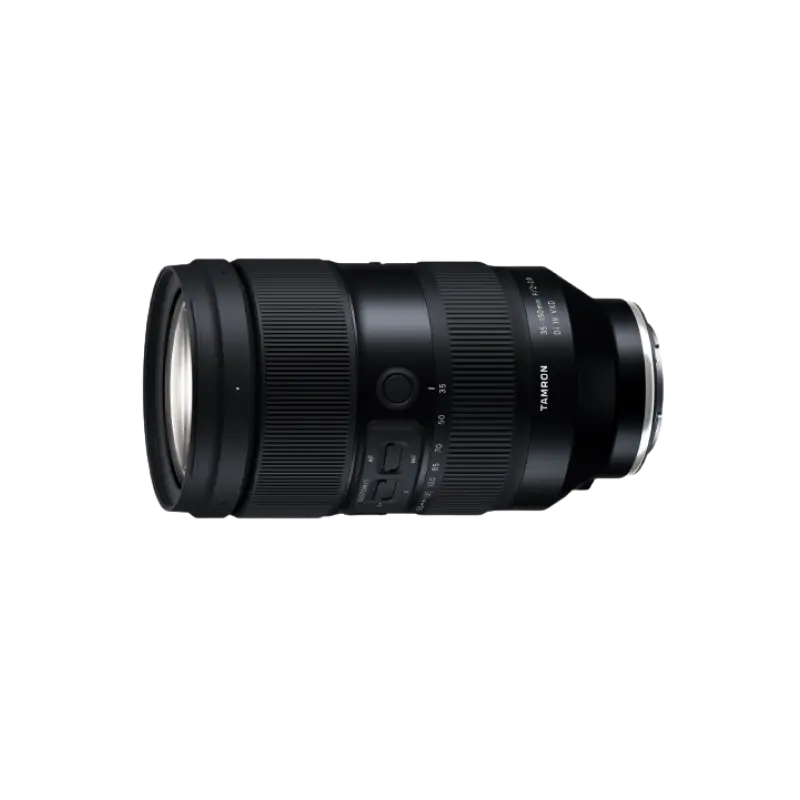
-
35-150mm F/2-2.8 Di III VXD a058(Model )
The 35-150mm F/2-2.8 Di III VXD (Model A058) is a high resolution travel zoom lens that covers everything from the 35mm wide angle to the 150mm telephoto focal length, the first zoom lens achieving an aperture of F2 at the wide angle end. It has a groundbreaking fast-aperture and utilizes the linear motor focus mechanism VXD (Voice-coil eXtreme-torque Drive), thereby achieving high speed, high precision autofocusing. The innovative lens design enabled us to greatly improve the lens's grip and functionality. The software, developed in-house, enables to easily customize functions and to update firmware.
-
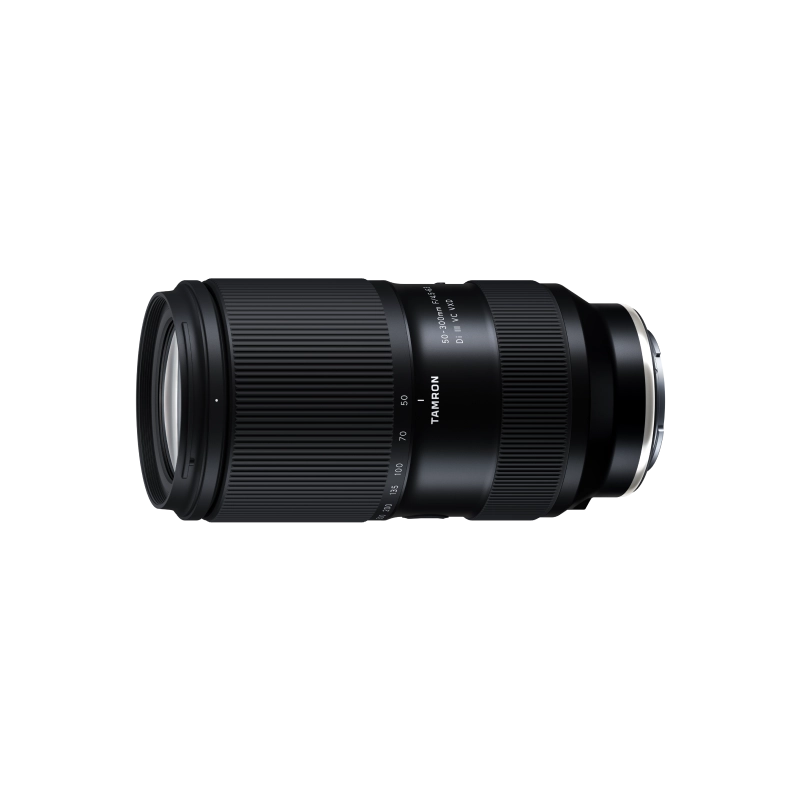
-
50-300mm F/4.5-6.3 Di III VC VXD a069(Model )
50-300mm F/4.5-6.3 Di III VC VXD (Model A069) is a 6x telephoto zoom lens for Sony E-mount that delivers outstanding convenience and image quality. Discover the groundbreaking capabilities of a 300mm telephoto zoom that starts from 50mm at the wide end.
-
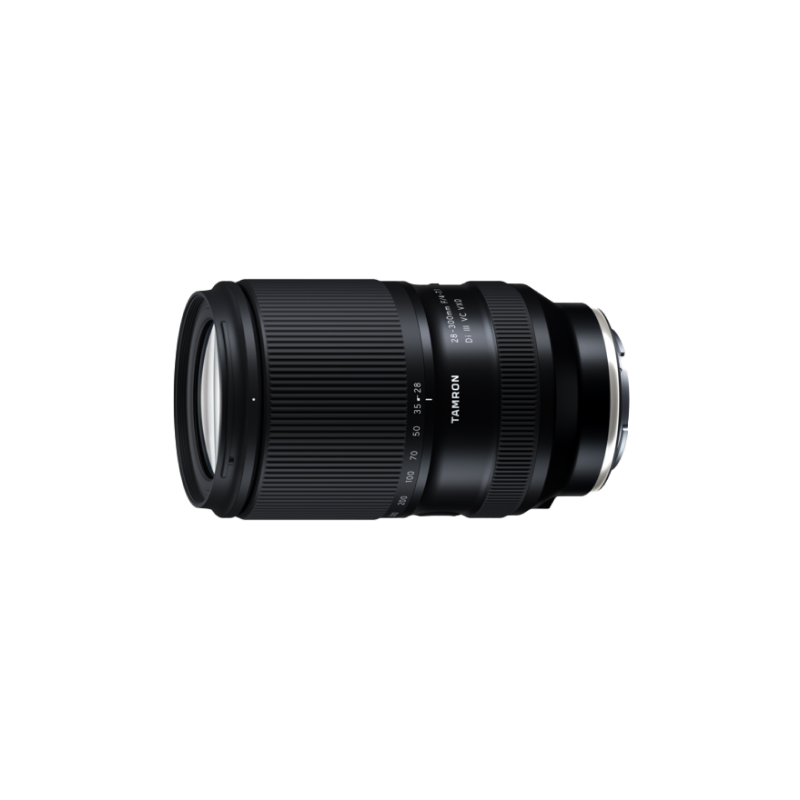
-
28-300mm F/4-7.1 Di III VC VXD a074(Model )
28-300mm F/4-7.1 Di III VC VXD (Model A074) is a compact and versatile all-in-one 10.7x zoom lens for Sony E-mount. The lens boasts class-leading high image quality, and is equipped with high-speed AF VXD and VC. Go from wide-angle to long telephoto in an instant and capture every moment of the world around you.

